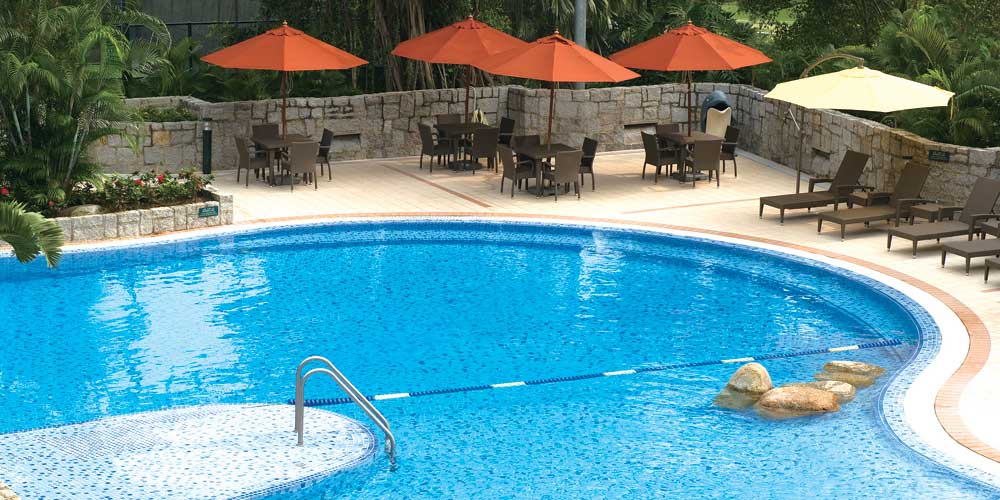Δεν είναι ασυνήθιστο η πισίνα να θολώνει κατά τη διάρκεια της νύχτας. Αυτό το πρόβλημα μπορεί να εμφανιστεί σταδιακά μετά από ένα πάρτι στην πισίνα ή γρήγορα μετά από μια δυνατή βροχή. Ο βαθμός θολότητας μπορεί να διαφέρει, αλλά ένα πράγμα είναι σίγουρο - υπάρχει πρόβλημα με την πισίνα σας.
Γιατί το νερό της πισίνας θολώνει;
Συνήθως αυτή την περίοδο, υπάρχουν πάρα πολλά λεπτά σωματίδια στο νερό της πισίνας. Αυτό μπορεί να οφείλεται σε σκόνη, φύκια, λάσπη, φύκια και άλλες ουσίες. Αυτές οι ουσίες είναι μικρές και ελαφριές, έχουν αρνητικό φορτίο και δεν μπορούν να βυθιστούν στον πυθμένα του νερού.
1. Κακή διήθηση
Εάν το φίλτρο δεν λειτουργεί σωστά, οι μικροσκοπικές ουσίες στο νερό δεν μπορούν να απομακρυνθούν πλήρως μέσω της κυκλοφορίας. Ελέγξτε τη δεξαμενή άμμου. Εάν η πίεση του μετρητή είναι πολύ υψηλή, κάντε αντίστροφη πλύση. Εάν το αποτέλεσμα εξακολουθεί να είναι κακό μετά την αντίστροφη πλύση, τότε πρέπει να αντικαταστήσετε την άμμο του φίλτρου.
Είναι απαραίτητο να καθαρίζετε και να συντηρείτε το φίλτρο τακτικά και να διατηρείτε το σύστημα κυκλοφορίας της πισίνας σε καλή κατάσταση.
2. Ανεπαρκής απολύμανση
① Ανεπαρκής περιεκτικότητα σε χλώριο
Το ηλιακό φως και οι κολυμβητές καταναλώνουν ελεύθερο χλώριο. Όταν η περιεκτικότητα σε ελεύθερο χλώριο στην πισίνα είναι χαμηλή, δημιουργούνται φύκια και βακτήρια που θολώνουν το νερό.
Ελέγχετε τακτικά το επίπεδο ελεύθερου χλωρίου και το συνδυασμένο επίπεδο χλωρίου (μία φορά το πρωί, το μεσημέρι και το βράδυ κάθε μέρα) και προσθέστε απολυμαντικό χλωρίου για να αυξήσετε την περιεκτικότητα σε χλώριο στο νερό της πισίνας εάν το επίπεδο ελεύθερου χλωρίου είναι χαμηλότερο από 1,0 ppm.
② Μολυσμένη πισίνα
Προϊόντα περιποίησης μαλλιών, έλαια σώματος, αντηλιακά, καλλυντικά, ακόμη και ούρα των κολυμβητών εισέρχονται στην πισίνα, αυξάνοντας την περιεκτικότητα σε συνδυασμένο χλώριο. Μετά από μια δυνατή βροχή, το νερό της βροχής και η λάσπη του εδάφους ξεπλένονται στην πισίνα, καθιστώντας το νερό πιο θολό.
3. Σκληρότητα ασβεστίου
Φυσικά, μην ξεχνάτε έναν άλλο σημαντικό δείκτη, τη «σκληρότητα του ασβεστίου». Όταν η σκληρότητα του ασβεστίου είναι υψηλή και το pH και η συνολική αλκαλικότητα είναι επίσης υψηλά, η περίσσεια ιόντων ασβεστίου στο νερό θα καθιζάνει, προκαλώντας αποτέφρωση. Το καθιζάνον ασβέστιο θα προσκολληθεί στα αξεσουάρ, στα τοιχώματα της πισίνας, ακόμη και στα φίλτρα και τους σωλήνες. Αυτή η κατάσταση είναι σπάνια, αλλά συμβαίνει.
①Τιμή pH:Πρέπει πρώτα να προσδιορίσετε την τιμή pH του νερού της πισίνας. Προσαρμόστε την τιμή pH μεταξύ 7,2-7,8.
② Καθαρίστε τα αντικείμενα που επιπλέουν στο νερό και χρησιμοποιήστε το ρομπότ καθαρισμού πισίνας για να απορροφήσετε και να αφαιρέσετε τα υπολείμματα αφού τρίψετε το τοίχωμα και τον πυθμένα της πισίνας.
③Σοκ από χλώριο:Σοκάρετε με αρκετά σωματίδια διχλωροϊσοκυανουρικού νατρίου για να σκοτώσετε τα φύκια και τους μικροοργανισμούς στο νερό. Γενικά, 10 ppm ελεύθερου χλωρίου είναι αρκετά.
④Κροκίδωση:Προσθέστε κροκιδωτικό πισίνας για να πήξει και να καθιζάνουν τα νεκρά φύκια και οι ακαθαρσίες από το νερό της πισίνας στον πυθμένα της πισίνας.
⑤ Χρησιμοποιήστε το ρομπότ καθαρισμού πισίνας για να απορροφήσετε και να αφαιρέσετε τις ακαθαρσίες που έχουν κατακαθίσει στον πυθμένα της πισίνας.
⑥ Μετά τον καθαρισμό, περιμένετε να πέσει το ελεύθερο χλώριο στο φυσιολογικό εύρος και, στη συνέχεια, ελέγξτε ξανά το επίπεδο των χημικών ουσιών της πισίνας. Προσαρμόστε την τιμή του pH, την περιεκτικότητα σε διαθέσιμο χλώριο, τη σκληρότητα ασβεστίου, την ολική αλκαλικότητα κ.λπ. στο καθορισμένο εύρος.
⑦ Προσθέστε αλγοκτόνο. Προσθέστε ένα αλγοκτόνο κατάλληλο για την πισίνα σας για να αποτρέψετε την εκ νέου ανάπτυξη των φυκιών.
Παρακαλώ κρατήστε το δικό σαςχημική ισορροπία πισίναςδοκιμασμένο για να αποφευχθεί μια τέτοια ταλαιπωρία και χρονοβόρα λειτουργία. Η σωστή συχνότητα συντήρησης της πισίνας όχι μόνο θα σας εξοικονομήσει χρόνο και χρήματα, αλλά θα διατηρήσει και την πισίνα σας κατάλληλη για κολύμπι όλο το χρόνο.
Ώρα δημοσίευσης: 01 Αυγούστου 2024


